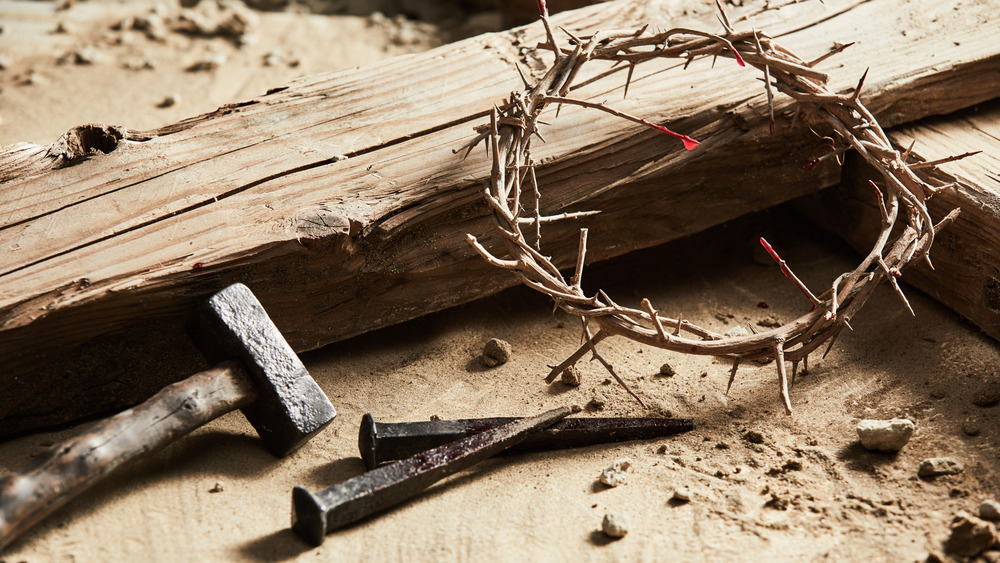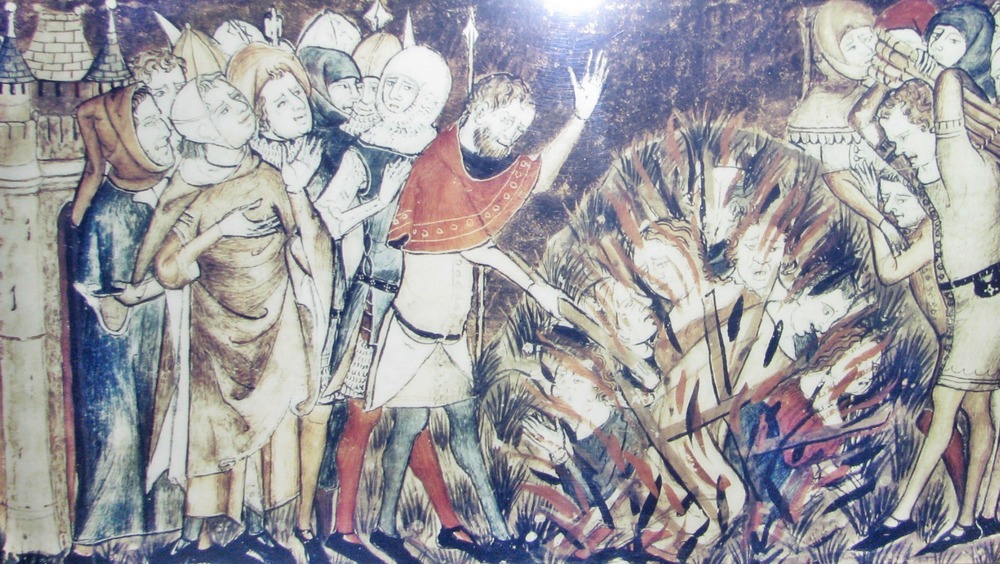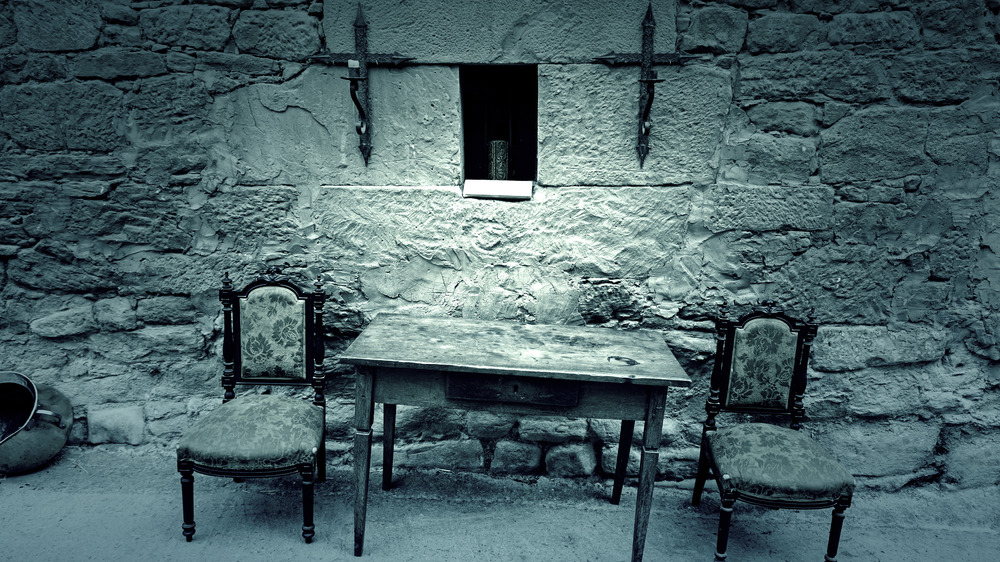The Messed Up Story Of The Holy Child Of La Guardia
We may receive a commission on purchases made from links.
In the province of Toledo, Spain, residents of the tiny town of La Guardia — population 1,500 — gather every September at the Hermitage of the Holy Child, a church alongside a nearby mountain to honor a nameless 15th-century folk saint dubbed "el Santo Niño de La Guardia," or "the Holy Child of La Guardia." A plaque on the wall of the church, dated 2004, reads, "The holy innocent child from Toledo, patron saint of this town, was crucified by various Jews out of hatred for our savior Jesus Christ."
As the Jewish Telegraphic Agency goes on to explain, the priest inside the church proclaimed in 2006, "We are all called upon to live like [the holy child] did," to an audience that includes a front row of young women wearing "white bridal gowns with sashes, and mantilla veils propped up in the Spanish royal style." After the service, one churchgoer, Milagros Redajo, stated, "It was the Jews. They abducted him and brought him here to La Guardia and did to him what they had done to Jesus: They crucified him."
These individuals are a lasting remnant of a disgusting bit of 13th-16th century anti-Semitic belief slash Church propaganda called "blood libel," which stated that, "Jews were killing Christian children to use their blood for the ritual of making unleavened bread" (matzah), as the Jewish Virtual Library recounts. And the so-called holy child? No body, no name, no heart supposedly carved out, and no corroborating details. He never existed.
Victims of a centuries-old tradition of 'blood libel' allegations
As far back as March 1144, when a young man named William of Norwich was found dead in the underbrush in the forest of Norfolk County, England, per The Nation, the same repulsive accusation came up time and again: Jewish people "conspired to kill children and use their blood for religious rites." Blood libel had been a common anti-Semitic go-to for centuries leading up to the Holy Child story in 1491. Some popes, like Gregory X (1210 – 1276 CE), per the Jewish Virtual Library, tried to denounce such allegations, saying, "... Most falsely do these Christians claim that the Jews have secretly and furtively carried away these children and killed them," but to no avail in changing popular belief.
So when nine men — three Jews and six "conversos" (Jews who'd converted to Catholicism) — were brought to the authorities in 1491 for recreating Christ's Passion using a 5-year-old child (whipping him, making him bear a cross, crucifying him, and unrelatedly, "profaning" a Host and extracting the child's heart), they were promptly tortured for confessions. They were then "strangled and burned at the stake or burned alive," per the Spanish magazine Sur. Each witness brought in to the proceedings had a different account of events, and no material evidence was ever produced.
The case of these nine men was made particularly difficult because heresy was thought to be hereditary. No matter what, it was believed, the conversos were born blasphemers.
A tale wielded by the first Grand Inquisitor after the fall of Granada in 1492
In the intervening years, the Holy Child tale has taken a strange path to memorialization. Starting with the very year of the executions, 1491, Jews of Ávila nearby Madrid, north of Toledo, started requesting legal documents to protect them from harm from the general public, as Jewish Virtual Library explains. Nearly 100 years later, in 1583, monk Fray Rodrigo de Yepes wrote Historia de la muerte y glorioso martirio del Sancto Inocente, que llaman de La Guardia (History and Death of the Glorious Martyrdom of the Holy Innocent, whom they call La Guardia). This book was used for a 17th-century, anti-Semitic play about the Holy Child, which itself was adapted into an 18th-century novella republished in 1943 during World War II called El Niño Inocente.
Centuries prior, though, Tomás de Torquemada — tyrant, fanatic, and Spain's first Grand Inquisitor — used the tale of the Holy Child to spurn Queen Isabella I to evict all 40,000 Jews from Spain in March 1492, the year after the Holy Child executions. This aligned nicely with Spain's reconquering of Islamic, Moor-owned Granada, which, as History tells us, fell to Spain in January 1492, and its Muslim population was forced to convert to Christianity. The queen could appear resolute, and Torquemada's extreme methods justified. Thankfully, no more Jews were left in Spain at that point to be tortured for "heresy, apostasy, sorcery, sodomy, polygamy, blasphemy, usury, and other offenses" per Britannica.


